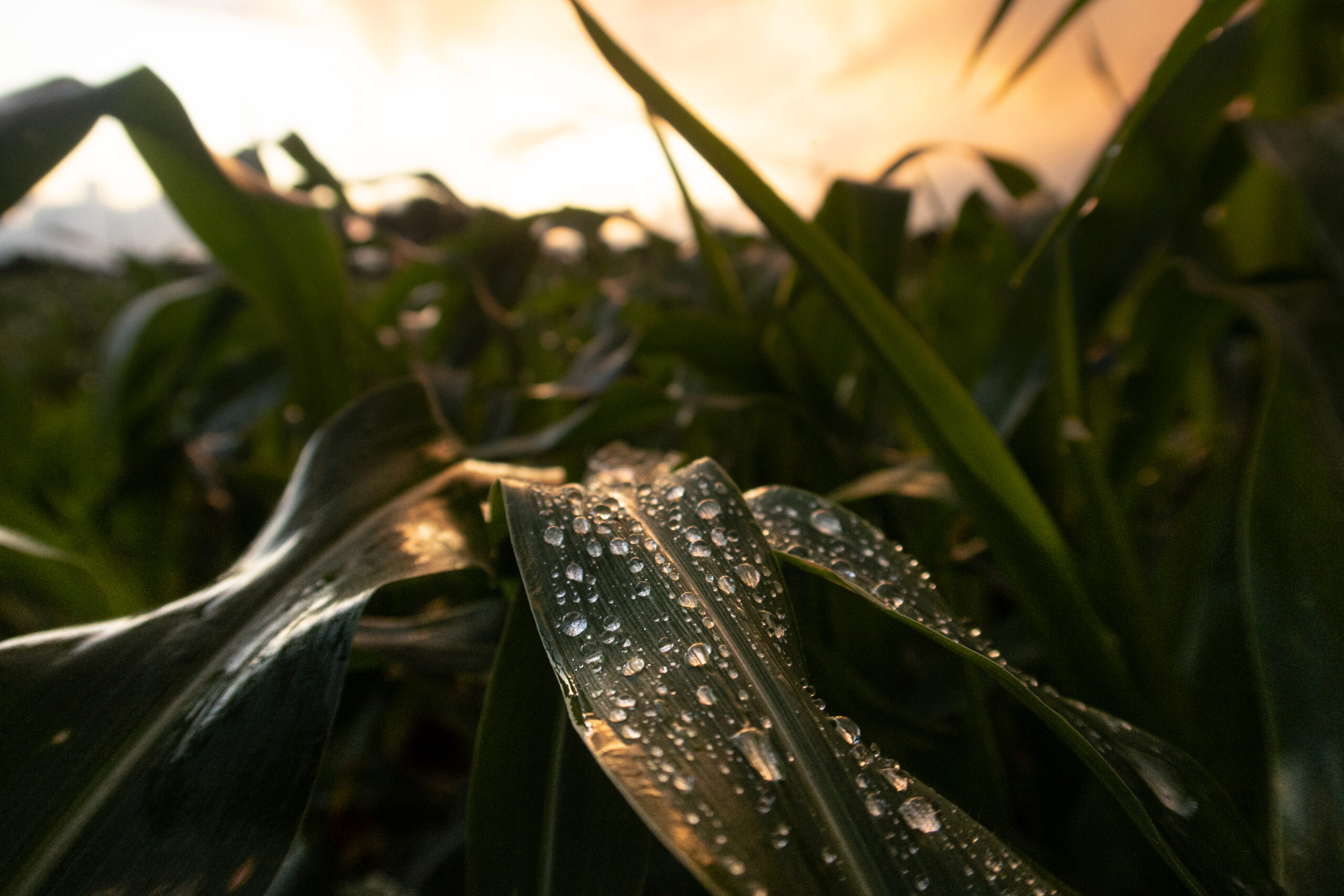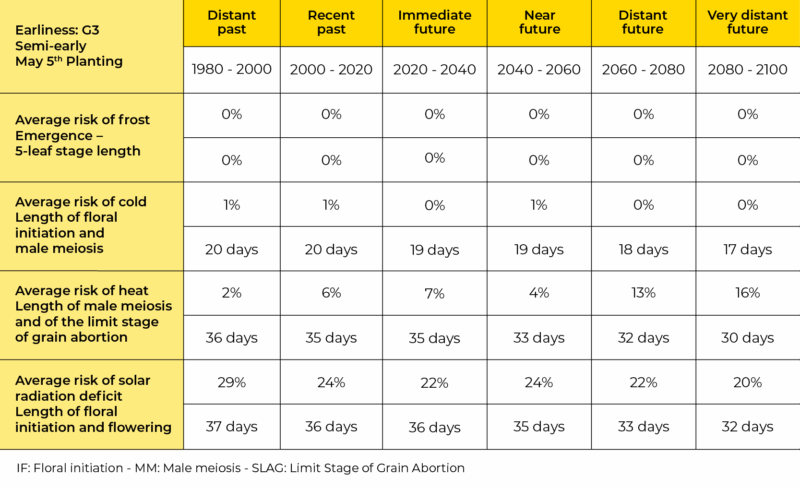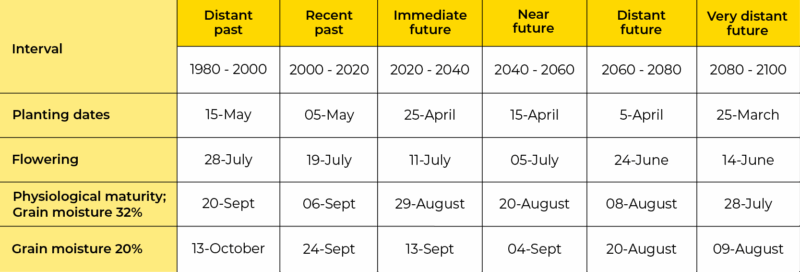Climate and Seed Production: 2100 Outlook

After having analysed the impact of climate change on corn seed production over the past forty years, the FNPSMS focused its research on the 2100 outlook, using various forecasting models. The trends thus established are to serve the researchers in their work, to adjust future production systems.
To formulate projections from the present to 2100, the FNPSMS, together with the Arvalis technical Institute used three climate models (for France), going from the most pessimistic to the most optimistic scenario, in terms of temperatures and rainfalls. These tools also provided data regarding solar radiation, the aim being to identify the impact of the different trends on the corn seed production – which is one way of already anticipating possible actions.

“Just as with the retrospective study conducted from 2021 to 2024, which focused on the past four decades, the latest simulations measure the impact of climate change on the vulnerable corn growth stages – especially meiosis and flowering”, Régis Doucet, an expert with the Arvalis technical Institute explains. “The projections are not be taken as precise forecasts, but rather as risk trends, based on the hypotheses that we consider worth retaining”.
Shorter Growing Seasons
Regardless of the models used in the study, one of its first findings is that the plants’ growth cycle is expected to accelerate. “At identical planting times, this means that flowering occurs two to four days earlier, and this should happen in the near future (2060-2080)”, he states. “Physiological maturity, too is expected to take place earlier – from three to twenty days earlier, depending on the simulated date. Another aspect that is impacted is the length of the grain dry-down, which should descend from the current eighteen days to twelve, in our future projections”.
The evolution of the plants’ growth cycles influences the intervals of vulnerability of corn to different weather hazards (spring frost, lack of water, heat waves, etc). “While the risk of cold temperatures in spring tends to diminish or even disappear altogether in the areas where they were typically present, the risk of recording higher and higher temperatures during summer increases – and all the more so beyond 2060: thus they will rise to double their current levels in the distant future, between 2080 and 2100 (see table below)”, Régis Doucet says. But there is one addendum: the evolution of average risk values is often accompanied by an increase in the year-to-year variability of these figures. “That is particularly true for the excessive summer temperatures, which pose a threat – especially in seed production – to the amount of pollen that is produced and its viability”, the expert adds.
Evolution of the length of the periods of vulnerability to weather hazards and of the average risk of various weather accidents per period – 1980-2100.
Source of climate data: SSP5-8.5 scenario – CNRM-ALADIN63.1 model

(Source: Study on the impact of climate change and the resilience of seed corn crops)
Technical, Genetic, and Geographic Levers
The different results obtained with current production itineraries raise the question of the appropriate adaptation tools that need to be put in place in the coming years in order to mitigate risks to seed corn production. “These tools are of three kinds”, Régis Doucet summarizes: “technical, genetic, and geographic. The technical levers are based above all on adjusting the production course, especially the planting times. To measure the resulting effects, what we have done in our study was to move the planting times ten days earlier every twenty years, whilst preserving the same earliness of hybrids and assuming that access to irrigation water was not a limiting factor. The result is a change in growth cycles and a shifting of the vulnerable stages (meiosis and flowering) before the hottest summer intervals; thus we can talk about one type of avoidance of the days that present the highest heat surplus. This shift also speeds up the dry-down of the ears, as this will take place during the interval with the highest temperatures.” On the other hand, moving the planting time to an earlier date also increases the risk of cold during flower initiation.
Dates of key-stages of seed corn – 1980-2100, with planting dates shifted to an earlier time. Toulouse, semi-early variety; plantings shifted gradually.
SSP5-8.5 scenario; CNRM-ALADIN63 model

“As to the genetic levers, they are more complicated to study within the framework of seed production”, Régis Doucet admits. “Basically, not all parent lines carry the tolerance traits that hybrids are equipped with to withstand abiotic stressors. Not to speak of the fact that hybrid choice is subject to contract provisions, which limits the possibility of adapting one’s hybrid earliness range”. Lastly, as to the search for new production areas, this is a process that is already on the way: in France and in Europe as a whole, it is done in order to align one’s choice to the local climate context, the aim being, once again, to limit the risks and to ensure the expected amount of seed production.
“Together with the technological innovations already available on the market or the disruptive innovations to come, these adaptations provide key levers to ensure the continuation of seed corn production both in the medium, and in the long, term”, he concludes.